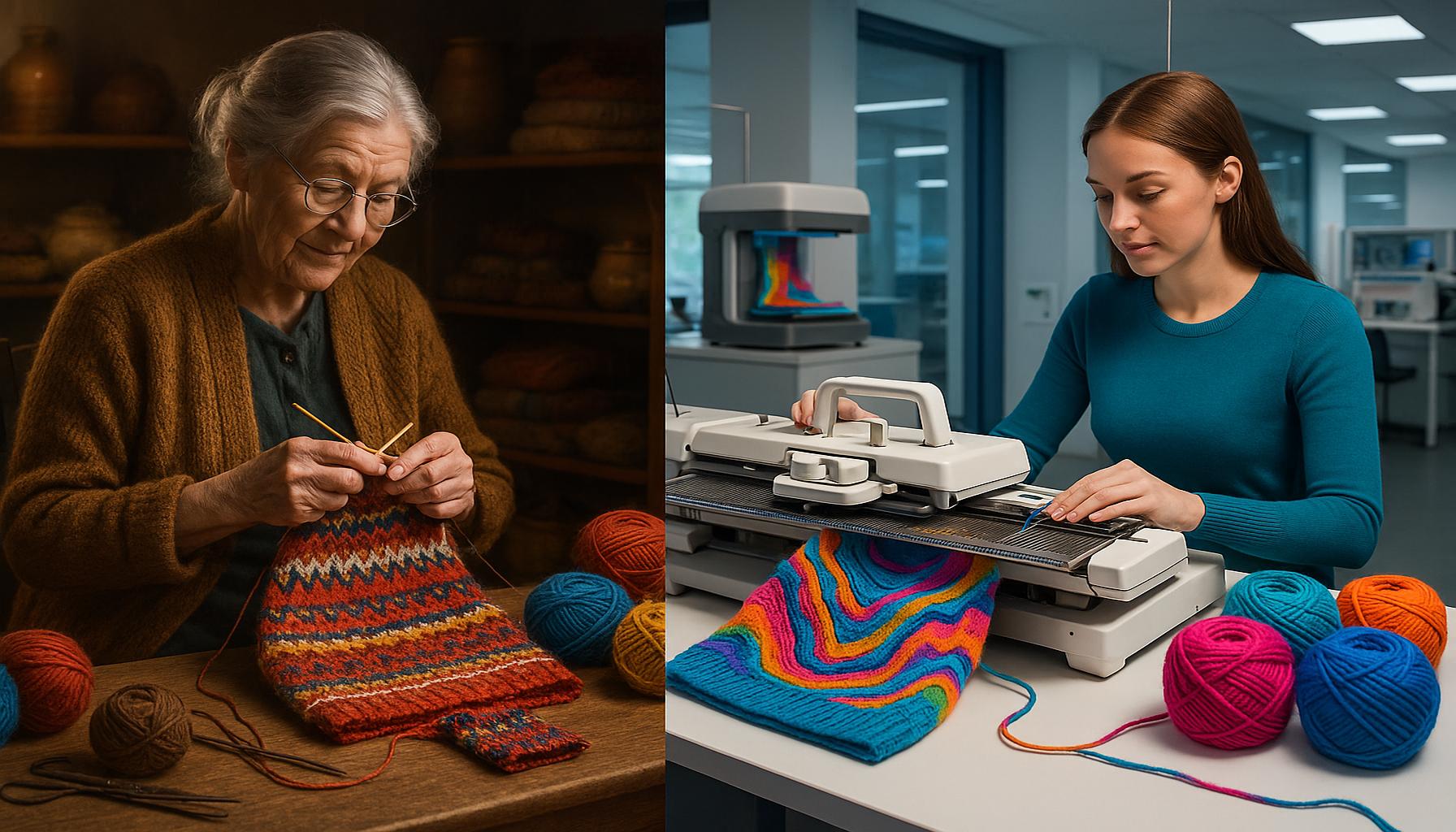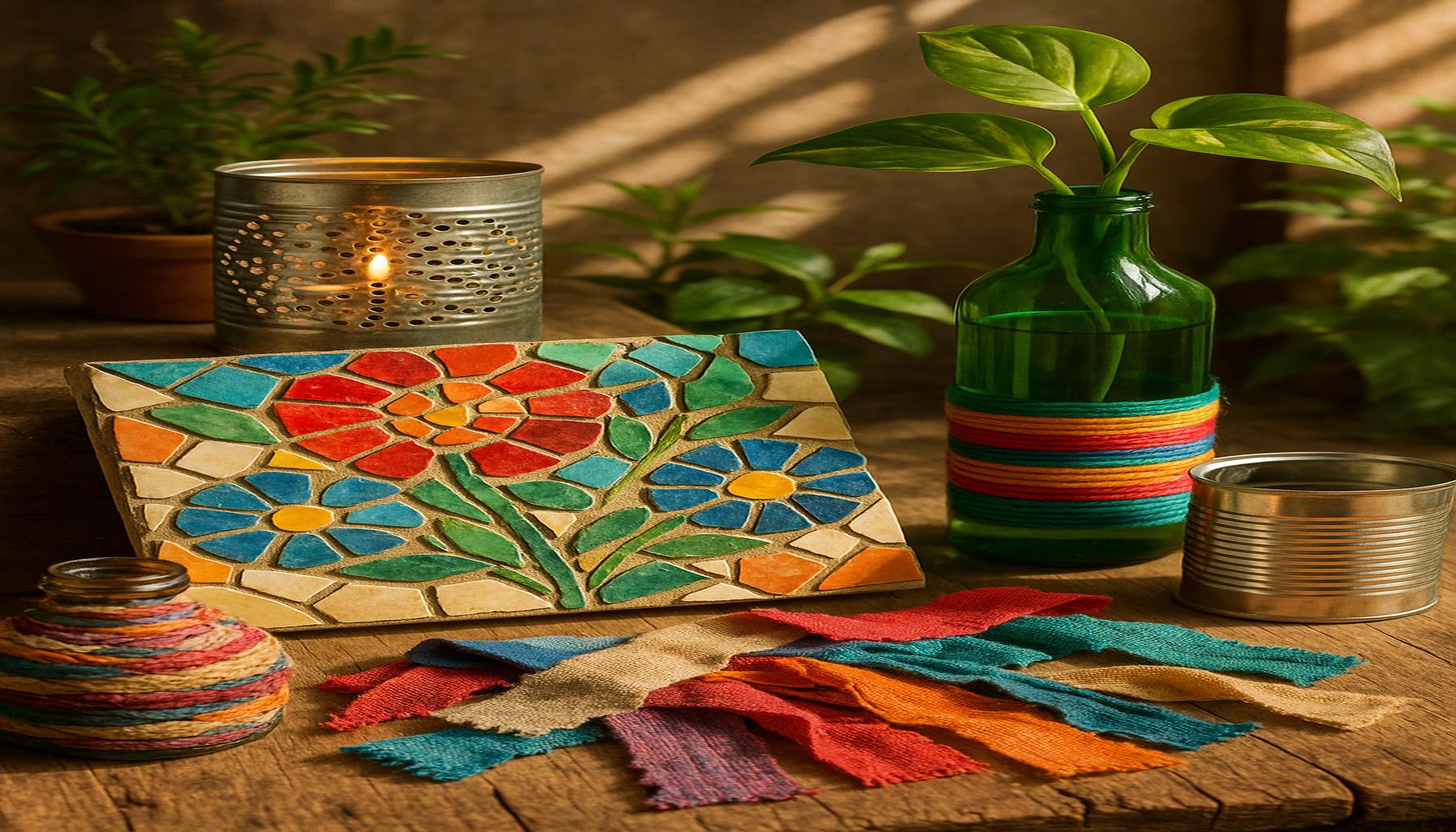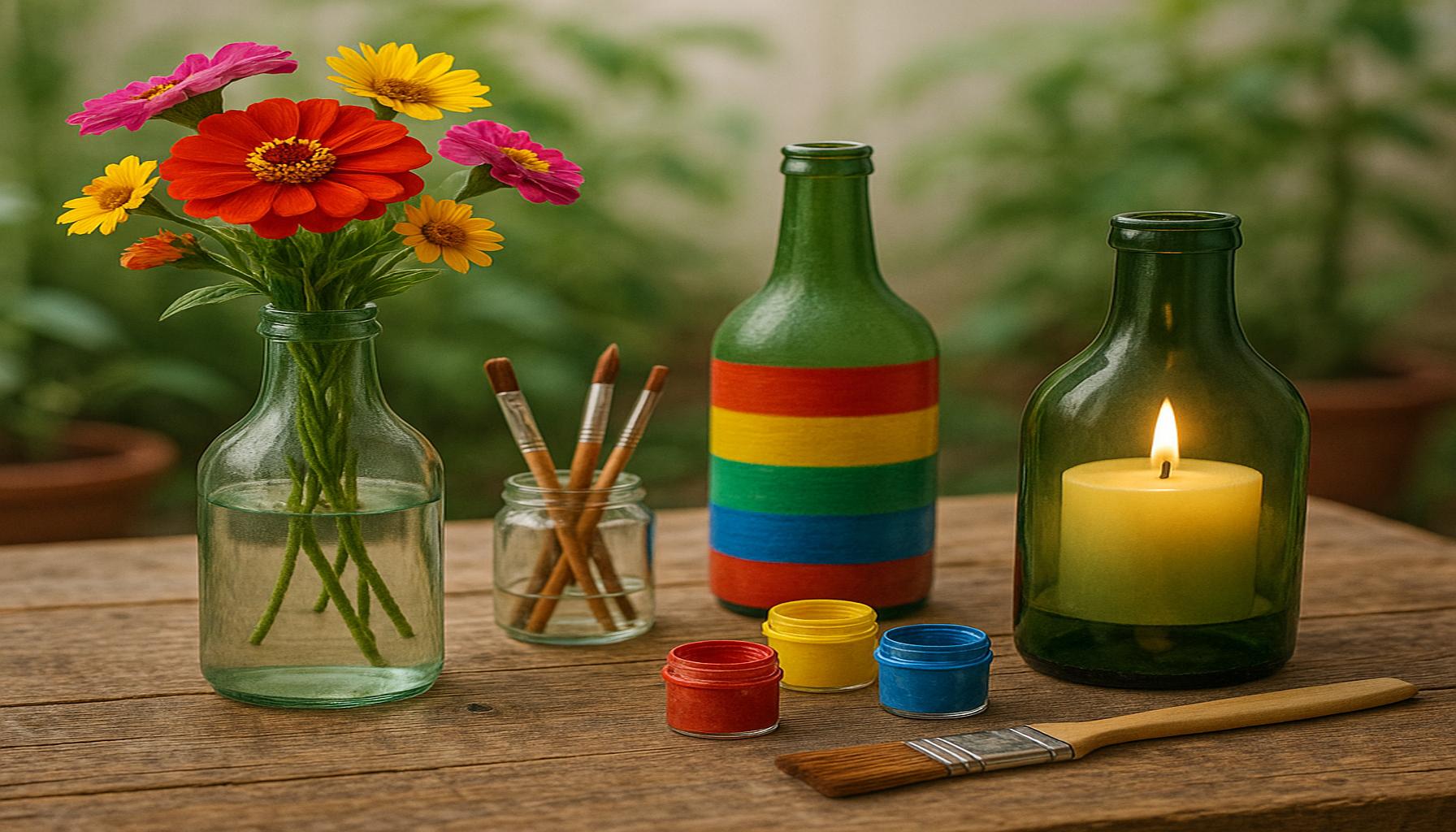The Evolution of Knitting: Traditions and Innovations in the Art of Knitting

The Evolution of Knitting: A Craft Through the Ages
Knitting is more than just a hobby; it embodies centuries of human creativity and tradition. From humble beginnings, this timeless craft has transformed significantly, reflecting changes in society and technology. Today, we explore how knitting has evolved over the years, highlighting key components such as:
- Historical Roots: Knitting can trace its origins back to ancient civilizations, with the earliest examples of knitted artifacts discovered in Germany and Egypt. These artifacts, believed to date from the 11th century, showcase intricate patterns that reveal not only the skill of the artisans but also their cultural significance. Knitting techniques spread throughout Europe during the Middle Ages, taking root in various communities where wool was abundant and knitting became a method of warmth and practical utility.
- Regional Variations: Across the globe, different cultures have developed unique knitting styles that reflect regional identities, such as the colorful Fair Isle patterns from Scotland, characterized by geometric designs, and the intricate cables found in Aran knitting from Ireland, typically used in sweaters. In the United States, knitting has also led to regional styles, with the Pacific Northwest favoring thicker, cozy yarns amid the chilly climate, while Southern states might adopt lighter, breathable materials. Each style tells a story, preserving the lore of its people.
- Modern Innovations: In today’s world, technology has significantly influenced knitting. From the introduction of machine knitting in the 19th century, which increased production speed and variety, to the rise of online knitting communities and digital patterns, modern conveniences have revolutionized this age-old craft. Contemporary knitters now have access to sustainable yarn options made from organic fibers and recycled materials, reflecting growing environmental consciousness. Furthermore, innovative techniques such as modular knitting have emerged, allowing for more complex designs and customizable projects.
As we delve into the rich tapestry of knitting, we uncover how traditional methods are intertwined with contemporary practices. The art of knitting serves as a canvas for individual expression, with each piece not only a product of skill but also a narrative of history and culture. Many contemporary artists have even begun integrating knitting into public installations, blurring the lines between craft and fine art.
Whether you’re a seasoned knitter or a curious beginner, the evolution of this craft offers a fascinating glimpse into the intersections of art, culture, and innovation. Knitting is not just about creating garments; it weaves together the stories of the past and present, inviting each knitter to embrace their journey. Step into the world of yarn and needles, and discover the many voices, traditions, and advancements that are stitched into every piece crafted.
DISCOVER MORE: Click here to delve into the evolution of digital art
Knitting: A Historical Perspective
The journey of knitting, a craft that transcends mere functionality, reveals a rich tapestry woven with historical significance. To truly appreciate knitting’s evolution, one must understand its historical roots and how various societal shifts have molded it into what it is today. The earliest surviving examples of knitted pieces date back to the 11th century, discovered in regions of Europe and the Middle East. Notably, Egypt boasts some of the oldest knitted artifacts, suggesting that this craft has long been intertwined with human civilization and cultural identity.
Knitting likely started as a method of creating utilitarian fabrics. Initially, it was used to make basic garments and tools, evolving from woven textiles that preceded it. As knitting techniques spread across Europe during the Middle Ages, regional adaptations began to surface. For instance, the widespread popularity of wool knitting can be attributed to its abundance in areas like the British Isles, where it played a critical role in providing warmth to communities, especially in the colder climates.
Influence of Culture and Community
The cultural influences on knitting practices shaped the vibrant array of styles we see today. Across various regions, distinctive cultural identities emerged through knitting traditions. Each community infused its designs and techniques with unique stories, resulting in a diverse heritage. Notable examples of such regional variations include:
- Fair Isle Knitting: Originating from the Shetland Islands of Scotland, Fair Isle knitting is known for its colorful patterns and intricate motifs, often featuring geometric shapes and nature-based designs.
- Aran Knitting: Hailing from the Aran Islands of Ireland, this style is characterized by its use of cables and intricate stitch patterns that not only enhance the aesthetic appeal but are also rich in symbolism, representing various elements of Irish heritage.
- American Knitting: In the United States, particularly in the Pacific Northwest, cozy, thick yarns became the norm, influenced by the region’s cold climate. Southern states, on the other hand, gravitate towards lighter and breathable materials that cater to warmer weather.
As these regional variations showcase, knitting has always been more than just a means to create fabric; it represents an intricate connection between people and their environments. The stories behind each stitch reflect the lived experiences of those who knit them, preserving folklore and tradition within every piece crafted.
Modern Innovations in Knitting
With the dawn of the 19th century and the advent of the Industrial Revolution, knitting began to undergo remarkable changes. The introduction of machine knitting revolutionized production speed, enabling mass production of knitted goods. As technology continued to advance, the knitting community embraced digital transformations, giving rise to online platforms where knitters could share patterns, offer tutorials, and foster collaborations globally.
Moreover, today’s knitters are increasingly focused on sustainability, seeking yarns made from organic fibers and recycled materials, which reflect a growing environmental awareness. The emergence of innovative knitting techniques, such as modular knitting, allows for the creation of more complex designs, encouraging creativity and individual expression.
As we observe this fascinating interplay between tradition and innovation, it becomes apparent that knitting remains a vibrant art form. In the next sections, we will explore how contemporary artists redefine this craft, merging knitting with other mediums and elevating it to the realm of fine art.
Knitting has transformed remarkably over the centuries, merging age-old traditions with contemporary innovations to create an art form that continues to captivate. The evolution has notably been influenced by cultural exchanges, technological advancements, and a resurgence of interest in artisanal crafts.One of the most significant shifts in the knitting landscape is the introduction of modern materials. Traditional wool has been complemented by synthetic fibers, allowing for greater versatility in texture and durability. Knitters now explore a variety of yarn options, including bamboo, alpaca, and specialty blends, each offering unique properties that enhance both functionality and aesthetics. These innovations have not only expanded the range of finished products but have also altered how knitting is perceived—from a purely functional craft to a medium for artistic expression.Moreover, the rise of technology has left an indelible mark on knitting practices. Digital platforms and online communities have democratized access to knitting knowledge and resources. Video tutorials, social media groups, and knitting apps foster a vibrant environment where both novice and experienced crafters can share techniques and inspiration. Patterns that once required access to local experts can now be downloaded from anywhere in the world, showcasing designs that hail from diverse cultures and knitting traditions.In recent years, the concept of sustainability has become integral to knitting as well. An increasing number of crafters are opting for eco-friendly yarns and employing sustainable practices, such as upcycling and community-focused projects. This shift reflects a growing awareness of the environmental impact of crafting, paving the way for a knitting revolution that prioritizes both artistry and ecological responsibility.As we delve deeper into the tapestry of knitting’s evolution, one cannot overlook the profound social aspects that stem from this age-old craft. From traditional knitters gathering in cozy circles to contemporary online forums, the act of knitting serves as a medium for connection, sharing, and cultural storytelling. For many, it is not simply a hobby but a way to forge community bonds and pass down traditions through generations.The interplay of tradition and innovation in knitting not only underscores its resilience but also enhances its relevance in modern society. By embracing both historical roots and contemporary approaches, knitting remains an evolving art form that continues to inspire creativity and community among enthusiasts worldwide.
DISCOVER MORE: Click here to learn about photography as a therapeutic tool
The Art of Knitting in the Digital Age
As we journey further into the 21st century, the intersection of technology and knitting has opened up new frontiers for creativity and community engagement. The rise of social media platforms has enabled knitters from all walks of life to connect, share their creations, and inspire one another. Channels like Instagram and TikTok have given birth to expansive knitting communities, allowing creators to showcase their work through captivating visuals and tutorial videos that reach a global audience.
In addition, knitting blogs and websites have proliferated, serving as repositories of knowledge and platforms for peer-to-peer learning. Knitters can now access a plethora of patterns, ranging from traditional designs to cutting-edge innovations. Online knitting seminars and workshops have also gained popularity, providing enthusiasts with the opportunity to learn specialized techniques, including entrelac, which creates stunning textured fabrics, or lace knitting, characterized by delicate, open patterns.
Innovative Techniques and Materials
The last few decades have witnessed significant innovations not only in techniques but also in the materials used for knitting. Traditionally, yarn was primarily sourced from animal fibers like wool, alpaca, and cashmere. Now, knitters can experiment with an astonishing array of alternatives, including plant-based fibers like cotton and bamboo, as well as synthetic blends that offer unique texture and elasticity.
Moreover, advanced knitting machine technology has empowered both artisans and commercial knitters to produce intricate patterns and designs with remarkable efficiency. Knitting machines can now create intricate lacework and elaborate motifs that would be painstakingly labor-intensive to achieve by hand. This fusion of technology and traditional needlework expands the possibilities in sustainable fashion, allowing for the production of beautifully crafted, eco-friendly garments.
Crossover into Fine Art
As knitting continues to evolve, it has also begun to carve out a space within the realm of fine art. Contemporary artists are redefining the boundaries of knitting as an artistic medium, blending textiles with various materials and forms. Works by artists like Magda Sayeg, who is credited with popularizing the “yarn bombing” movement, challenge perceptions by transforming urban spaces into colorful, knitted showcases that blend public art with community engagement.
Additionally, art installations like those of Olek, whose crocheted works envelop objects and buildings in vibrant yarn, push the narrative of knitting beyond its traditional confines. These projects not only bring attention to the art form but highlight the potential for knitting as a means of social commentary, exploring issues of identity and belonging.
Sustainability and Ethical Knitting
A growing consciousness about sustainability is reshaping knitting communities. Modern knitters are increasingly prioritizing ethical practices, opting for yarns that are responsibly sourced, biodegradable, and produced under fair labor conditions. The slow fashion movement resonates strongly within the knitting world, encouraging individuals to create garments that are timeless rather than trend-driven, highlighting the skill and artistry involved in handcrafting each piece.
In this age of fast fashion, the meticulous nature of knitting serves as a gentle reminder of the value of craftsmanship and the stories behind the materials used. Each project fosters a connection between the knitter and the fabric, allowing for creativity and individuality to rise above prevailing trends.
Knitting’s Place in Cultural Identity
The art of knitting remains deeply connected to cultural identity across the globe. From traditional patterns passed down through generations to modern interpretations infused with personal flair, each stitch recounts stories of heritage, community, and resilience. As cultural exchanges continue to flourish, knitters everywhere expose themselves to myriad techniques and inspirations, lending new voices to this timeless craft.
As we continue to explore the evolution of knitting, we find that this art form is not merely about creating fabric. It represents an intricate web of connections—the past, present, and future intertwined, with each knit stitch binding together generations and diverse cultures. The remarkable journey of knitting exemplifies its enduring appeal as both a cherished art form and a community activity, reaffirming its significance in today’s world.
DISCOVER MORE: Click here to dive deeper
Conclusion
In examining the evolution of knitting, we uncover a rich tapestry woven with threads of tradition and innovation. From its humble beginnings as a practical craft essential for survival, knitting has transformed into a multifaceted art form that speaks to cultural heritage, community bonding, and contemporary creativity. The integration of technology has redefined how knitters create and connect, as seen through the proliferation of social media and online platforms that foster collaboration and inspiration across borders.
Modern advancements in materials and techniques have expanded the possibilities within the art of knitting, allowing creators to explore sustainable practices that challenge the fast-fashion paradigm. Embracing a philosophy that values craftsmanship and ethical production, knitters are not only producing unique garments but also promoting environmental consciousness and social responsibility.
As knitting continues to blur the lines between fine art and handcrafted design, it serves as a powerful vehicle for personal expression and cultural commentary. The contemporary movement towards yarn bombing and art installations showcases how this traditional craft can address significant themes of identity and belonging, revealing its relevance in today’s society.
Ultimately, knitting is more than just creating fabric; it is a profound expression of our shared human experience. Each stitch carries the weight of history and contemporary significance, inviting us to reflect on our own role within this ongoing narrative. As we look toward the future, knitting holds the promise of further evolution, inviting new generations to partake in a craft that is as old as civilization itself yet constantly reimagined for the times ahead.



